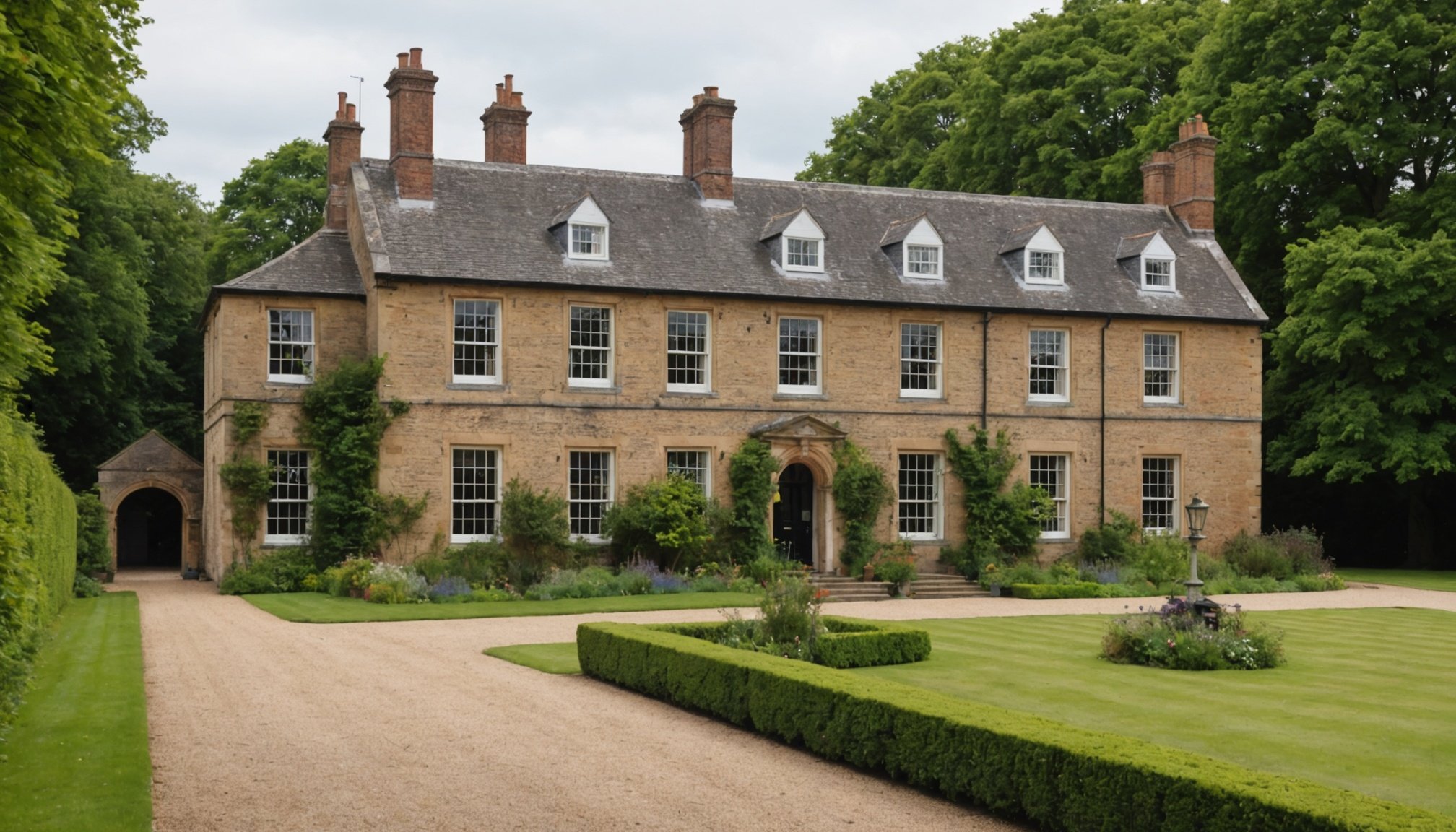Overview of Historic Listed Buildings in the UK
Historic buildings in the UK serve as tangible markers of cultural and architectural heritage. These structures, known as listed buildings, are classified based on their national importance and architectural interest. The dynamic classification system helps in determining the level of protection and restrictions imposed on each building.
Categories of Listing
There are three primary categories of listing:
This might interest you : Ultimate Guide to Safely Moving Your Grand Piano to a New Home in Birmingham
-
Grade I: This category includes buildings of exceptional interest. Representing around 2.5% of all listed buildings, these structures require meticulous preservation efforts.
-
Grade II*: These buildings are particularly important and of more than special interest. They account for about 5.5% of listed structures and often embody significant historical features.
Have you seen this : Navigating the portugal nhr program: a complete guide
-
Grade II: The most common category, Grade II buildings are of special interest, warranting every effort to preserve them.
Importance of Preservation
The preservation of these historic buildings is crucial for maintaining the nation’s heritage. Conservation involves protection against unsuitable alterations and ensures that future generations experience these architectural marvels. With robust categories in place, the UK manages to strike a balance between development and preservation, safeguarding its historical narrative through these cherished edifices. Owners play a vital role in this process, bearing the responsibility to maintain the historic authenticity of their properties.
Restoration and Renovation Considerations
Owning a historic building brings with it the charm of the past, but restoration and renovation require careful attention. Adhering to established preservation techniques is crucial to maintaining these treasures. Homeowners can preserve architectural integrity by focusing on restoration tips and avoiding common renovation pitfalls.
When undertaking refurbishment, it is important to employ sensitive methods. For example, preserving original materials whenever possible helps retain the building’s authenticity. Repairs should be minimally invasive and match the existing structure to retain historic aesthetics. Improper renovations can lead to irreversible damage or even legal issues.
Consulting experts and preservation specialists is advantageous. These professionals provide invaluable advice and restore buildings within the legal framework. Often, they can offer insights into uncovering hidden historic features that can enhance the overall value of the property. Collaborating with skilled architects and craftspeople ensures that the renovation work complies with building regulations and maintains historic significance.
In conclusion, while renovations can breathe new life into these structures, a thorough understanding of restoration guidelines ensures homeowners uphold both the physical and historical integrity of their listed buildings.
Legal Obligations for Homeowners
Owning a listed building involves significant legal requirements, encompassing property laws and adherence to building regulations. Homeowners must gain a thorough understanding of the restrictions and responsibilities inherent in preserving a historic property. This includes obtaining appropriate permissions when considering alterations or extensions to ensure that the changes comply with regulations protecting the building’s historic features.
In terms of property laws, any alterations must align with the approved building regulations. This ensures that the character and essence of the listed building remain intact, maintaining the integrity of its historic or architectural significance. Certain alterations requiring consent include changes to the building’s structure or appearance that could impact its historic value.
Homeowners are entrusted with maintaining and preserving the original features of the building. This responsibility underpins the importance of preservation and heritage conservation, safeguarding the building for future generations. Failing to adhere to these requirements can result in legal issues or financial penalties, and understanding the implications of legal obligations is crucial. By ensuring compliance, homeowners not only protect their property but also contribute to the ongoing conservation efforts that preserve the nation’s architectural heritage.
Planning Permission and Restrictions
Embarking on alterations within historic listed buildings involves navigating a meticulous process of obtaining planning permission. This ensures that any modifications uphold the integrity and essence of these culturally significant structures. Certain changes, from minor interior adjustments to substantial renovations, necessitate building consent to safeguard the special architectural features.
Understanding what constitutes permissible alterations is crucial. Types of modifications requiring consent often include changes affecting the building’s facade, structural elements, or anything that might alter its historic character. Consulting with local authorities or heritage organisations can provide clarity on these requirements.
The application process for planning permission involves submitting detailed proposals. These must comprehensively outline the intended changes and demonstrate how they align with preservation standards. Ensuring compliance with guidelines not only mitigates legal repercussions but also contributes to the enduring legacy of heritage conservation.
Case studies illuminate successful planning applications, providing invaluable insights into effective approaches. For example, securing consent to restore a historic façade while upgrading interior amenities can enhance both the building’s functionality and its period appeal. By carefully adhering to process guidelines, owners can achieve a harmonious blend of modernity and tradition within these cherished edifices.
Potential Financial Aids and Grants
Owning a listed building may imply significant expenses, but several financial assistance options can ease restoration costs. Grants for restoration and funding options are available from various organisations focused on heritage preservation. These resources are designed to support homeowners in maintaining the architectural integrity of these historic structures.
Accessing these funds involves understanding the landscape of available grants for restoration. Many heritage bodies, such as the Heritage Lottery Fund, offer extensive grant programs. Other sources may include local councils or regional preservation societies. These funds help cover costs related to repairs, restoration, and even maintenance, ensuring buildings retain their historic contribution to the UK’s cultural landscape.
The application process typically requires a detailed project proposal. Applicants should outline their restoration intentions and demonstrate how the funding will sustain the building’s historic value. Documentation often includes the building’s historical significance and proposed preservation techniques, essential for demonstrating a commitment to conservation.
Additionally, securing financial assistance can provide long-term economic benefits. Well-preserved properties often appreciate in value post-restoration, enhancing their investment potential. Understanding these funding opportunities can significantly alleviate the financial burden of owning and maintaining a historic listed building.
Impact on Property Value
Owning a historic listed building can significantly impact property value, offering unique investment potential. These structures often command higher prices due to their rarity, architectural significance, and cultural value. Market trends suggest a steady appreciation of these properties, driven by the growing appreciation for heritage conservation. Buyers are increasingly attracted to the charm and authenticity these buildings provide.
Various factors influence property value, including location, historical significance, and the condition of the building. Well-preserved properties, especially those that maintain their original features, fetch a premium price. Additionally, making thoughtful improvements in line with preservation standards can enhance a building’s appeal and market worth.
Case studies highlight the appreciation in property value following appropriate restoration efforts. For instance, a Grade II listed manor house recently underwent sensitive restoration, leading to a 30% increase in market value. These examples underscore the potential financial benefits of investing in historic listed properties.
However, it is essential to weigh restoration costs against potential property value gains. Consulting real estate experts and preservation specialists can provide guidance, ensuring a balanced approach to maintaining and enhancing a listed building’s value.
Resources and Support for Owners
Owning a historic listed building can be both rewarding and challenging. Fortunately, various resources and support organisations are available to aid owners in navigating these challenges. These bodies provide invaluable information and assistance, ensuring owners preserve the integrity and value of their properties.
Several national organisations, like Historic England and the National Trust, offer guidance on maintaining and restoring listed buildings. They provide insights into best practices and preservation techniques and often organise workshops on current restoration methods. Local heritage societies can offer tailored advice specific to your region, assisting in understanding local property laws and building regulations.
In addition to organisations, numerous online platforms and forums connect owners of historic properties. These networks foster sharing experiences, challenges, and solutions, creating a supportive community for exchanging ideas and knowledge.
For those interested in researching building history, resources like the Historic Environment Record and local archives are invaluable. These repositories house important documents, photographs, and maps, aiding in understanding a building’s past and planning for its future preservation efforts. Engaging with these resources builds a comprehensive understanding of one’s property’s historical importance, enhancing any restoration or conservation project.











